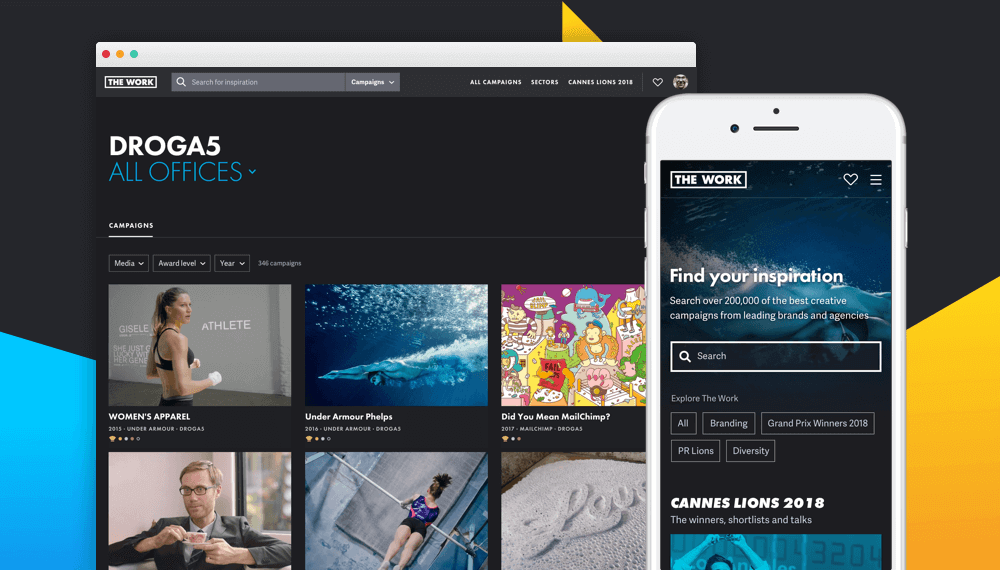Digital transformation in aviation: it's time for take off

The smart mobile internet has created new ways for airlines to compete. The challenge for the Chief Digital Officer is to foster a more customer-focused mindset and build a digital organisation that’s closely integrated with operations — not just with sales.
The first wave of digital transformation in the airline industry was all about selling inventory and it happened a very long time ago. Airlines were amongst the first businesses to insert networked software into the value chain, placing global distribution systems into travel agencies as early as the 1960s and ’70s. Forty or fifty years later, sales and marketing remains the primary focus of the digital team in most airlines.
Now, the smart mobile internet and onboard wifi are opening up new opportunities to differentiate across the entire customer experience, not just at the point of sale.
One of these opportunities is in sales: we can sell inventory and ancillaries in smarter ways, by thinking afresh about how customers search for, select and pay for flights; but the second opportunity is about building customer and business value by adding a layer of flight management, entertainment, information and shopping services on top of the core product — the travel experience.
This is why the second wave is proving hard to catch. The customers are moving faster than the organisation.
The second wave of digital transformation in the airline industry is all about understanding the customer and making flexible individual offers in the right place, at the right time and by improving the experience of air travel. Airlines’ advantage over third party distributors is their management of the customer experience; if they organise customer data to understand and meet varied customer needs, then they are starting to act like Netflix or Amazon: they are no longer low margin commodity suppliers
This is a substantial challenge; it means integrating digital more closely into the larger organisation and creating a unifying value proposition and a set of guiding principles by which to make decisions and apply resources. There are however, in most organisations, at least four big blockers to building a powerful digital proposition that spans the entire customer journey.
Departmental silos
In most airlines, the digital team has little control over the levers of the experience of flying or influence over operational hardware decisions, contracts with caterers and airport handlers, price packages and bundles, membership tiers or benefits, or over brand communication. Once digital becomes a point of differentiation across the entire customer experience then it needs to become one with the business, not an afterthought in the basement or — worse — offshore.
This requires a new way of working within the enterprise, organising around the customer rather than business functions.
Poor customer knowledge
If the organisation is to move forward from selling tickets to creating customer value then mindset has to change too. The ‘business requirements’ mindset (‘What does the business need? — more revenue, lower costs…) has to be replaced by a customer-focused mindset. Often, existing KPIs (especially in sales, marketing, customer relationships) become an obstacle to putting customer needs ahead of those of the business.
So, who on your team knows and represents the customer? How loud is their voice? How well respected is their point of view?
Part of the problem here is that we don’t know our customers very well. Most book through an OTA or in a group, creating an indirect relationship which, although it might involve “Hello, welcome aboard” is rarely accompanied by anything but a shallow knowledge of their needs and preferences. Worse, we know little individually about what we do know as an organisation, or what we know isn’t actionable, because customer data is distributed unevenly in silos. In Europe and the United States we know still less about new customers from China, Korea and Indonesia — the biggest growth markets — or about the preferences of the new flush of older customers choosing to fly. In emerging markets, airlines need to learn and act fast to prevent OTAs dominating this space. We need to start asking them questions and gaining insights that drive payment and product development; and we need to privilege services or features that generate good customer data as a by-product.
Legacy technology
Legacy technology and partnerships are blockers, too. How can it become possible to offer passenger management of the entire flight experience when we are hostage to a GDS or PSS supplier, to whatever they decide to put in their roadmap, and constrained by the obligations in a contract with four or six or eight years to run. Creating and adjusting modular offers, making the most of ancillaries, upgrades or loyalty, or building bespoke services with dependencies on price or tier is out of your hands. There might be a contractual expectation, but there’s little you can do when the GDS turns around and says, ‘Sorry, that vital new payment option has slipped out of the backlog’. New Distribution Capability (NDC) offers some answers here, but ultimately this means airlines turning a critical point of competitive advantage into a core capability. In-house technical and design capabilities have to improve to exploit genuine opportunities. GDS suppliers encouraged highly integrated standardised offers for their own commercial reasons. In the digital airline, technical architecture has to change to become more loosely coupled to allow greater flexibility and in-house control over passenger outcomes.
Scarce digital talent
In the first wave of digital in airlines, lots of the technology was outsourced and airlines relied on consultancies and agencies for strategy and experience design. Catching the second wave involves becoming a learning organisation, with the objective of knowing the customer (wherever they are) intimately, how they buy and pay, their priorities, objections, and establishing new ways of working. Talent is the key. The customer-focused, software-driven airline will need to acquire new skills in design, engineering and product management and to begin organising people in cross-functional teams using lean and agile product development practices.
Taking on the challenge
If these are the blockers, how do we tear them down? How does an airline make the transformation from one with a total focus on e-commerce and outsourcing technology solutions, to one with a new digital mindset, with in-house digital capabilities and a customer-focused organisation supporting customers every step of the way? Here’s a seven point plan.
1. Seek to gain greater independence from third-party platforms such as GDS, with the objective of offering customers timely and relevant sales and flight information in the environment that suits them — especially inside the airline’s ecosystem where, often, the PSS/GDS supplier may have built the direct sales channel onto their booking engine technology. The starting point, then, is an audit of the current situation that you are working within and around: review contracts, technical architecture, data, channels to market. Consider redesign of technical architecture to loosen the grip of big tightly-coupled GDS/PSS and web applications; create more loosely coupled applications that provide each other (or third-party channels, devices and services) with consistent customer and inventory data. These actions put the airline in a position to control the most critical aspects of the experience of search and selection, cross-sell and up-sell, up to the point of departure and beyond.
2. Set out and evolve a strategic view on the potential for digital services to improve competitiveness. This view and the guiding principles and actions your establish must have a coherent fit with the core business strategy, as well as the real life technical, contractual and people situation in which your are operating. Don’t rely excessively on top-down strategy and planning. This is unknown territory. Set out your stall and adjust on the basis of what you make, test and learn in delivering real product ideas and organisational change.
3. Ensure that digital has representation on the board: every business in every sector is becoming a software-powered business, but in airlines, in particular, digital is becoming a strategic source of competitiveness. The implication is a substantial change in the scale of resources and capital applied to digital, and the need to talk on an equal basis with leadership.
4. Invest in talent: digital strategy, product management, customer research, interaction design, engineering and data science. You can’t create good products without buying in product sense: this is the experience, intelligence and cross-section of product skills necessary to create products that customers love. Consultancies can fill the gap, set good examples, guide you towards new ways of working and organising (see below) but the bottom line is, you can’t do this without your own good people because we are talking about a core competitive set within your business.
5. Introduce new ways of working from top to bottom: agile, lean, customer focused. Agile is a form of adaptive planning that builds momentum in product teams and is flexible enough to allow continuous change and improvement (being good at agile takes experience). Lean is an iterative cycle of learn, make and test, each cycle examining product fit with customer need, technical feasibility and business impact. Lean is the way to make products that work, that customers love and that grow businesses.
6. Consolidate and communicate what you know already about your customers, spread that knowledge and make it actionable, and prioritise services that generate data that is useful to you and your customers. Keep talking to customers, gather insights that you can use to improve product.
7. Reorganise decision making, incentives and teams to enable collaboration across departments: operations, commercial, customer experience, marketing, etc. so that you can make products that leverage all of the capabilities of your business and support the entire cycle of a customer journey in a coherent and consistent way.* Most importantly, bring the business into the digital team. Recruit digital champions from operations etc,. to become part of the digital team and represent the team in negotiations with their former departments: bring their domain knowledge to your digital product team.
How the plan is implemented depends on the strategic focus and existing assets, capabilities and partnerships of the business. Of course you can’t do all of this at once. Points One and Two are the diagnostic and planning parts, so yes they would come first. But there will be many unknowns, not least your ability to progressively attract talent and move the organisational blockers; the strategy and the plan will evolve and retain focus on what is possible and desirable. Finnair (see our case study) has been working on its transformation for four years and it is by no means complete; there have been adjustments in strategy, the most notable being a ramp up in investment in in-house talent and development of shared services (sign-up, payment, ancillaries and flight management) and an upgrading of mobile to primary channel.
The goal is to offer customers timely and relevant offers and information in the environment that suits them — whether inside or outside of the airline’s ecosystem. By placing the customer at the centre in this way airlines become less like traditional travel companies and more like digital natives.
Continue reading
Full-stack Software Developer (Full-time)
We’re looking for an experienced and versatile developer who enjoys building great products and working collaboratively in cross-disciplinary teams.
Creating a digital business intelligence venture out of the Cannes Lions Festival
Made by Many, in partnership with Ascential, the parent company of the Cannes Lions Festival, has launched a digital database of inspirational advertising...


